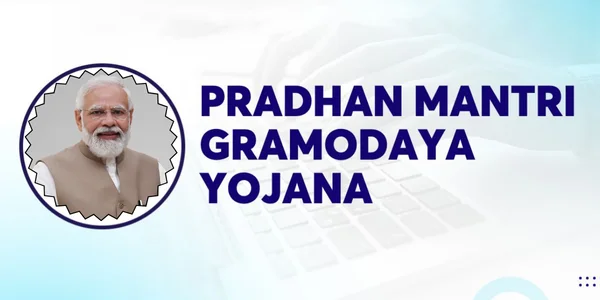The Pradhan Mantri Gramodaya Yojana (PMGY) is a significant initiative by the Government of India aimed at improving the quality of life in rural areas. Launched with the objective of addressing critical needs such as housing, drinking water, primary health, primary education, and rural roads, the scheme seeks to ensure that the benefits of economic growth reach the grassroots level.
Objectives of PMGY

The primary objectives of the Pradhan Mantri Gramodaya Yojana are:
- Housing for All: To provide adequate shelter to Below Poverty Line (BPL) families in rural areas, ensuring access to basic amenities.
- Improved Infrastructure: To develop essential infrastructure such as roads, drinking water facilities, and sanitation in rural regions.
- Enhanced Quality of Life: To uplift the living standards of rural populations by providing access to primary health and education services.
Key Features of the Scheme
- Targeted Beneficiaries: The scheme focuses on BPL families in rural areas, with a particular emphasis on Scheduled Castes (SC), Scheduled Tribes (ST), and freed bonded laborers. Notably, up to 40% of the total allocation can be utilized for non-SC/ST BPL families, and 3% is earmarked for BPL disabled persons.
- Decentralized Implementation: The District Rural Development Agencies (DRDAs) or Zilla Parishads determine the number of houses to be constructed in each Panchayat. The Gram Sabha then selects beneficiaries from the eligible households, ensuring community involvement in the decision-making process.
- Empowerment of Women: Dwelling units are allotted in the name of the female member of the beneficiary household or jointly in the name of both husband and wife, promoting gender equity.
- Beneficiary-Led Construction: Beneficiaries have the autonomy to construct their houses according to their preferences, utilizing local materials and cost-effective technologies. The involvement of contractors is prohibited, and government departments may only provide technical assistance if required.
Implementation Strategy
The PMGY adopts a holistic approach to rural development by integrating various components:
- Housing (Gramin Awaas): Aligned with the Indira Awaas Yojana, this component aims to reduce the housing shortage among BPL families by providing financial assistance for the construction of dwelling units.
- Drinking Water: Ensuring the provision of safe and adequate drinking water to rural households.
- Primary Health: Strengthening primary healthcare infrastructure to provide accessible medical services.
- Primary Education: Enhancing educational facilities to improve literacy rates and educational outcomes.
- Rural Roads: Developing and maintaining rural roads to improve connectivity and access to markets and services.
Funding and Allocation
The funding for PMGY is shared between the central and state governments. Allocations are made based on the population of BPL families in each state, ensuring that resources are directed to areas with the greatest need. States are encouraged to contribute additional funds to supplement the central allocation, thereby enhancing the impact of the scheme.
Monitoring and Evaluation
To ensure effective implementation, a robust monitoring mechanism is in place:
- Regular Reporting: DRDAs are required to submit periodic progress reports detailing the number of houses constructed, funds utilized, and beneficiaries covered.
- Third-Party Evaluations: Independent agencies conduct evaluations to assess the quality of construction and the socio-economic impact on beneficiaries.
- Community Oversight: Gram Sabhas play a crucial role in overseeing the selection of beneficiaries and monitoring the progress of construction activities.
Challenges and Way Forward
While the PMGY has made significant strides in improving rural infrastructure and housing, several challenges persist:
- Resource Constraints: Limited financial resources can impede the timely completion of projects.
- Capacity Building: There is a need for enhanced training and capacity building at the grassroots level to ensure effective implementation.
- Sustainability: Ensuring the sustainability of assets created under the scheme requires continuous community engagement and maintenance.
Addressing these challenges necessitates a collaborative approach involving government agencies, non-governmental organizations, and the rural communities themselves.
Conclusion
The Pradhan Mantri Gramodaya Yojana represents a comprehensive effort by the Government of India to uplift rural populations by providing essential infrastructure and services. By focusing on housing, drinking water, health, education, and connectivity, the scheme aims to bridge the rural-urban divide and promote inclusive development. Continued commitment and effective implementation are key to realizing the vision of a prosperous and self-reliant rural India.